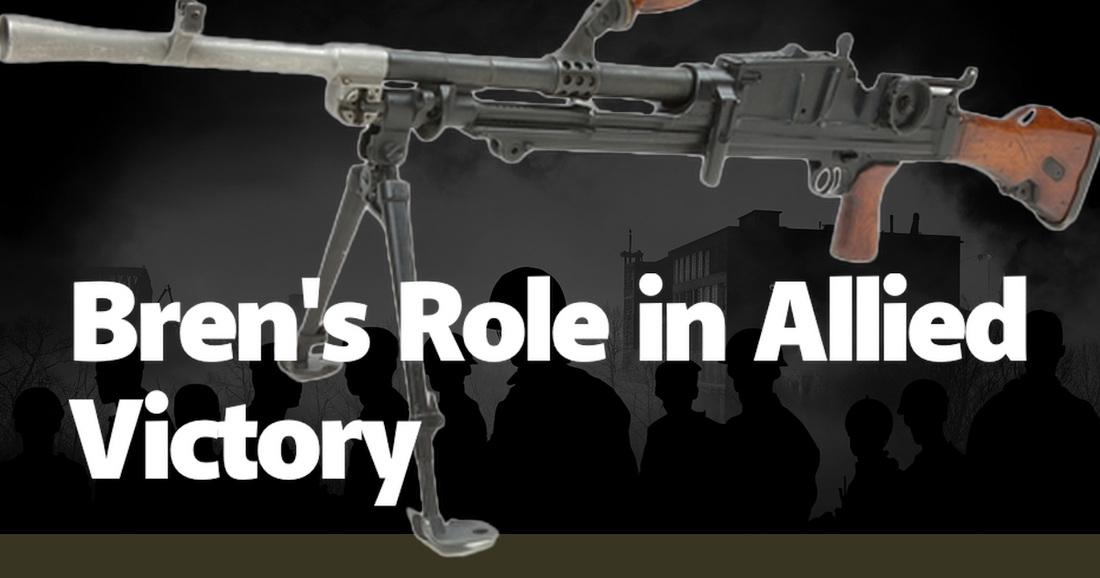In the annals of World War II, countless weapons and strategies played pivotal roles in the Allied victory, but few were as iconic and impactful as the Bren light machine gun. The Bren, formally known as the Bren Gun, was a cornerstone of the British and Commonwealth infantry forces, providing a blend of mobility, reliability, and firepower that proved indispensable on numerous fronts. Its design, derived from the Czechoslovakian ZB vz. 26, was adapted by the British to meet their specific needs, resulting in a weapon that could deliver sustained fire with remarkable accuracy.
The Bren's journey began in the interwar period when the British Army sought to modernize its arsenal. Recognizing the need for a light machine gun that could support infantry advances and provide a base of fire, they turned to the ZB vz. 26. After extensive testing and modifications, the Bren was born, named after the Brno factory in Czechoslovakia and Enfield in the United Kingdom. Its introduction in 1937 marked a significant shift in British infantry tactics, emphasizing the importance of fire and maneuver. The Bren's ability to lay down continuous fire allowed riflemen to advance or retreat under its protective cover, fundamentally changing the dynamics of infantry engagements.
Throughout the war, the Bren proved its worth in a variety of theaters, from the deserts of North Africa to the jungles of Southeast Asia. In the North African campaign, the Bren's reliability in harsh conditions was a testament to its robust design. Soldiers often recounted how the Bren continued to function despite being clogged with sand and dust, a common issue in the desert environment. Its versatility was also on display, as it could be mounted on vehicles, used in anti-aircraft roles, or even deployed in fixed defensive positions. This adaptability made the Bren an invaluable asset in the diverse and often unpredictable conditions of World War II.
One of the most compelling anecdotes from the war involves the Bren's role during the Dunkirk evacuation. As British and Allied forces made their desperate retreat to the beaches, the Bren was instrumental in providing covering fire against advancing German troops. Stories abound of Bren gunners holding the line, their steady streams of fire buying precious time for thousands of soldiers to reach the evacuation points. The Bren's effectiveness in such dire circumstances underscored its importance not just as a weapon, but as a symbol of resilience and determination.
The Bren's impact was not limited to its firepower; it also influenced the morale of the troops who wielded it. Soldiers often spoke of their confidence in the Bren, knowing that it would not fail them in critical moments. This psychological edge was crucial, particularly in the high-stress environments of frontline combat. The Bren's design also facilitated ease of use and maintenance, allowing soldiers to quickly learn its operation and conduct field repairs. This user-friendliness ensured that the Bren could be kept in action even under the most challenging conditions, maintaining the flow of fire that was essential to Allied tactics.
In the Pacific theater, the Bren's role was equally significant. The dense jungles and rugged terrain posed unique challenges, but the Bren's portability and firepower made it a key component of jungle warfare. Australian and British forces relied heavily on the Bren to counter Japanese infantry tactics, which often involved close-quarters combat and ambushes. The Bren's ability to deliver rapid, accurate fire helped to neutralize these threats, providing a crucial advantage in the brutal and unforgiving environment of the Pacific islands.
As the war progressed, the Bren continued to evolve, with various models and modifications enhancing its performance. The introduction of different barrel lengths, improved sights, and other refinements ensured that the Bren remained effective against increasingly sophisticated enemy tactics and equipment. Its longevity as a frontline weapon, even after the war, is a testament to its enduring design and the foresight of its creators. The Bren's legacy extended into the post-war years, influencing the development of future light machine guns and remaining in service with various armed forces around the world.
In conclusion, the Bren light machine gun was more than just a tool of war; it was a linchpin of Allied infantry strategy and a symbol of the resilience and ingenuity that defined the fight against tyranny. Its contributions to key battles, its reliability in diverse conditions, and its impact on soldier morale underscore its pivotal role in the Allied victory. The Bren's story is a testament to the importance of innovation and adaptability in warfare, and its legacy continues to be remembered and honored by military historians and veterans alike.

